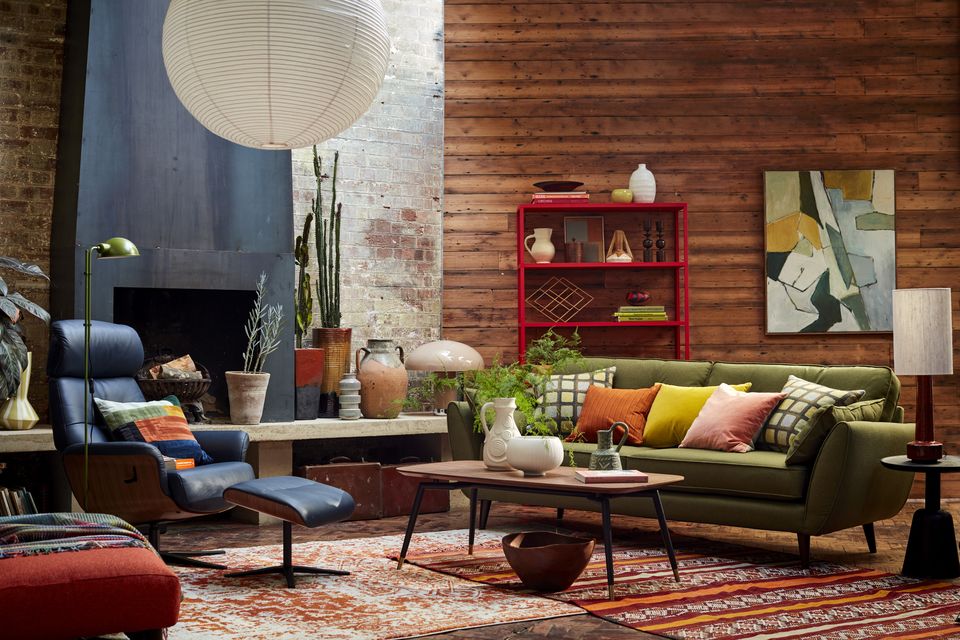
For those who are neurodivergent or have sensory issues, a home with comforting materials can make a world of difference French Connection Zinc sofa from DFS An interior design from Jameson's The Sensory Home Liverpool project Interior design by Emma Webb with Daisy James wallpaper mural Pippa Jameson The sensory guestroom in the Ashling Hotel Miliani sofa from DFS Jameson worked with brands to create a home from a sensory-first approach Carlisle corner sofa from DFS The sensory guestroom in the Ashling Hotel has a scent diffuser What materials we use play an important part in sensory design If you think interior design isn’t important for mental health, you simply haven’t thought about it enough. Harsh lighting makes us feel anxious, often without really knowing why. We struggle to concentrate in noisy rooms.
It’s hard to relax in uncomfortable chairs, bad smells are worrying, and lumpy mattresses are the enemy of sleep. For autistic people, these sensory irritants can be unbearable. I should know.

I’m autistic and so is my husband. A comfortable, relaxing home can make the difference between being able to go in to work and not being able to function in the world at all. Pippa Jameson Pippa Jameson is a specialist in sensory design, best known for her book The Sensory Home (2022).
This year, Jameson is coming to Dublin for the PTSB Ideal Home show at the RDS (October 18 to 20). She’ll be speaking at the DFS Interiors Theatre on Saturday, October 19 at 1.10pm.
Her approach, in a nutshell, is to put sensory needs at the heart of interiors. We experience our homes with all our senses — sound, smell, and touch, and sight. This calls for a multi-sensory approach to design.
Jameson is now working as an interior design consultant for neurodivergent families (neurodivergent is an umbrella term that includes, but isn’t limited to, autism and ADHD). An interior design from Jameson's The Sensory Home Liverpool project There’s no one-size-fits-all. Neurological differences run in families and any household may include people with different, or even conflicting, sensitivities.
This calls for adaptable spaces with what Jameson describes as “sensory nooks”. These are small personalised spaces where someone can regulate their mood and recharge their batteries. “Open plan layouts can cause all sorts of problems,” she says.
“When you’re setting up your home, it’s important to create individual spaces.” Jameson worked with brands to create a home from a sensory-first approach For Jameson, the journey began several years ago when her autistic daughter plonked down on the sofa and told her how comfortable she felt at home. This was a child who was very sensitive to her surroundings.
“She’d been kicked out of nursery because her environment failed her,” Jameson explains. Determined to do better for her child, Jameson began to research the relationship between interior design and autism. What was it about being at home that made her daughter feel comfortable and how could that information be used to help other people with sensory needs? Along the way, Jameson discovered that she too is autistic.
Jameson wanted to show that sensory design could be grown-up and sophisticated Parents are often hyper-aware of their child’s sensitivities while ignoring their own. “If you’re late diagnosed, you may not have considered this before,” she says. “It’s about observing what your triggers are.
” This might be as simple as the sound of someone unloading the dishwasher or household noise coming from multiple directions. “That’s one of my triggers,” Jameson admits. “It’s not just me being difficult.
I really can’t cope.” An interior from The Sensory Home Liverpool project Jameson is based in the UK. In a recent project, The Sensory Home Liverpool, she worked with mainstream brands to create a home from a sensory-first approach.
“It’s a case study,” she explains. “I wanted to show that sensory design can be grown-up and sophisticated. It can look stylish and feel calm.
” She worked with Dulux (€28.95 for a 2.5L can) to find paint colours unlikely to overwhelm the senses, and Hillary’s to choose layered window dressings that soften the sounds in a room and control natural light.
“It’s really about understanding what materials we choose to have around us,” she says. “Often there are small elements that can be achieved irrespective of budget or the size of your home.” What materials we use play an important part in sensory design The cost of home improvements is an important point, as many neurodivergent families struggle to make ends meet.
There’s a high rate of unemployment, many work part time, and taking care of kids with additional needs is time consuming and expensive. “My ambition is to become a registered charity,” Jameson says. “I’d like to be able to offer a free design consultation service to neurodivergent families.
” Miliani sofa from DFS Research is ongoing. Often described as “neurodesign”, it draws on insights from neuroscience to create designs that create happiness and comfort. “I don’t think people yet have an understanding of how much our environment impacts us,” says Emma Webb, an interior designer based in Dublin.
“There’s very little research into home environments, so we’re applying the knowledge from other environments, like education and care. If you design for people at their weakest, you benefit everyone.” Carlisle corner sofa from DFS On one level, design for neurodivergent households involves removing or managing irritants.
“It’s about ambient lighting, reducing glare and managing acoustics,” says Webb. “Contemporary homes are often designed to reduce clutter, which benefits everyone, but this can result in rooms with hard surfaces and fewer soft furnishings to absorb sound. Most people are open to having a plant strategy and that helps to mitigate noise.
” But, as Webb points out, it’s also about using art and colour in a way that promotes joy. “There’s a lot of research out there about how people respond to art,” she says. Interior design by Emma Webb with Daisy James wallpaper mural A recent project included a wallpaper mural in the hallway.
The Pink Lady by Daisy James (POR) is wall-height installation with a lot of pink and layered elements of reflective gold. Reactions to this depend on sensibilities. Some autistic people love sparkly colours.
I’m one of them but, if I installed a pink-and-gold mural at home, I’d quickly become single. Izzie sofa from DFS The challenges of adapting to a new interior environment can make it hard for neurodivergent families to travel. Irish hotels are beginning to acknowledge this and the sensory guestroom in the Ashling Hotel, Dublin, is a move in the right direction.
It accommodates two adults and two children and the price is the same as the hotel’s other rooms of similar size (from €170 per night). The sensory guestroom in the Ashling Hotel The room includes all sorts of lovely stuff: a giant bubble tube that illuminates in changing colours, an LED mood tube that’s also a Bluetooth speaker, memory foam beanbags, a Chrome Cast TV, and a colour-changing aroma diffuser. “When people call to book, they can choose the essential oil in the diffuser,” says hotel manager Ronan Walsh.
“Parents know exactly what they child needs — they have very specific requirements.” The sensory guestroom in the Ashling Hotel has a scent diffuser The room was designed in collaboration with AsIam, Ireland’s autism charity, and the sensory equipment comes from Sensory House Ireland. See idealhome.
ie, dfs.ie, thesensoryhome.com, ashlinghotel.
ie, webb.ie Join the Irish Independent WhatsApp channel Stay up to date with all the latest news.














